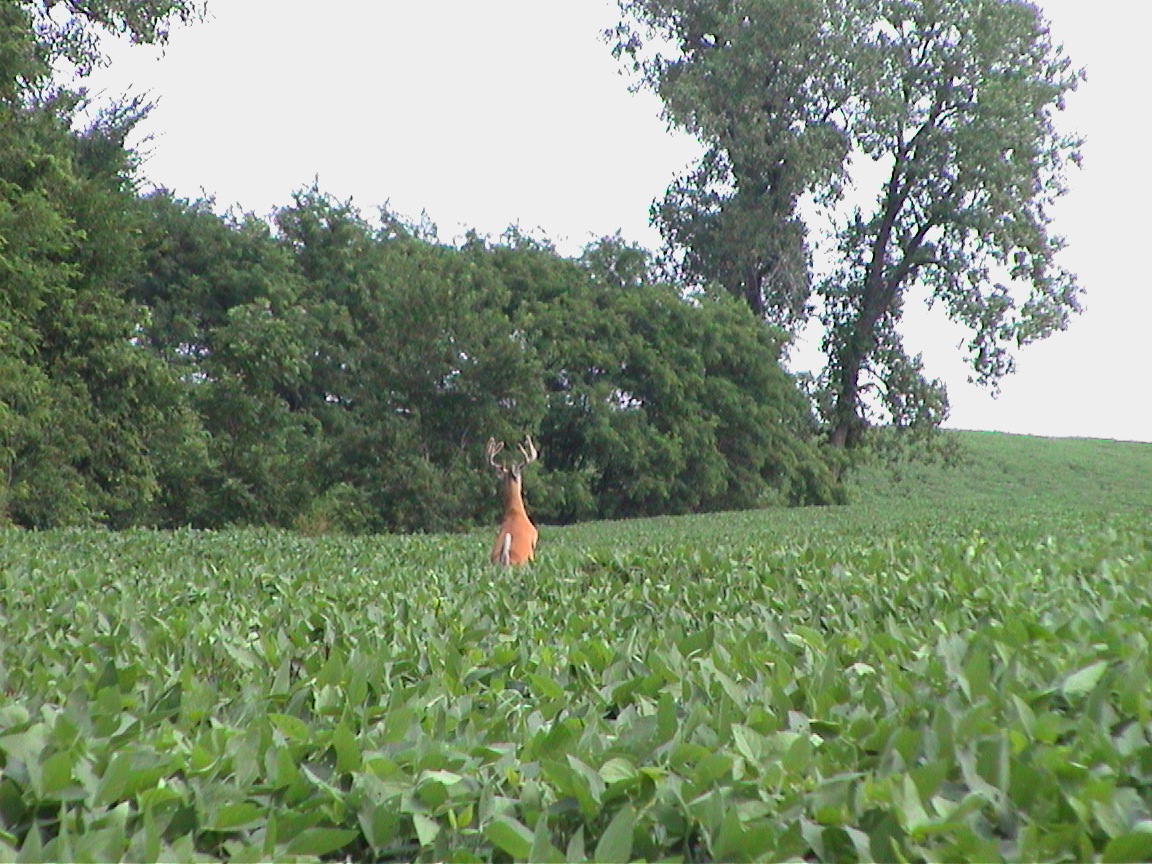Antler Size and Food Plots
Filed under: Deer Management, Food Plots, Hunting Blog
It’s certain that the quality of forage bucks consume is a huge factor in the size of antlers they produce. If your goal is to manage deer to produce better antlers, you must improve the quality of their diet. Establishing and maintaining food plots is probably the most practiced method of improving the quality of forage available to a local deer herd.
The phrase “food plots” is a very generic term. It’s used to describe everything from very small hidey hole plots best used to attract deer into shooting range to large ag fields that are capable of providing most of the quality forage necessary for all the deer in that area.
Unfortunately the lack of a precise definition has created some unsatisfied hunters. Some folks plant a hidey hole sized food plot and are upset when they don’t see an increase in average antler size.
Deer will consume several pounds of forage daily. At one end of the spectrum, it’s easy for a few deer to consume all the forage in a small plot before it provides any measurable advantage toward the herd’s health. The other end of the spectrum is the large production soybean fields in the Midwest. There are so many acres of soybeans in many areas that deer densities of even 100+ deer per square mile still have plenty to eat. This is a primary reason that deer in these areas produce larger antlers and more fawns than in areas where the landscape is primarily covered with trees.
Research has shown that in areas with relatively poor habitat (all trees, no crops, limited early succession habitat), just 1-2% of land in high quality food plots can make noticeable increases in average antler size!
However, to have this type of success, it requires more than simply scratching the dirt in an acre or two for each 100 acres. To increase the average antler size the deer must consume the forage, the forage must be available throughout the early and mid growing season and year round is better. The forage must transfer nutrients to deer.
This means the forage must be high quality (Eagle Seed forage soybeans have tested among the highest in digestible protein of all forage crops by multiple universities), and produce enough tons of forage to feed the herd.
Food plots can be a great hunting and herd quality tool. However, like most things in life, you rarely get more out of them than you put into them. There is no magic recipe. Food plots designed to improve herd quality require time and effort to establish. They also require ample soil moisture – which is currently missing from much of the whitetail’s range. I hope there is adequate soil moisture where you plant food plots!
Growing Deer together,
Grant




